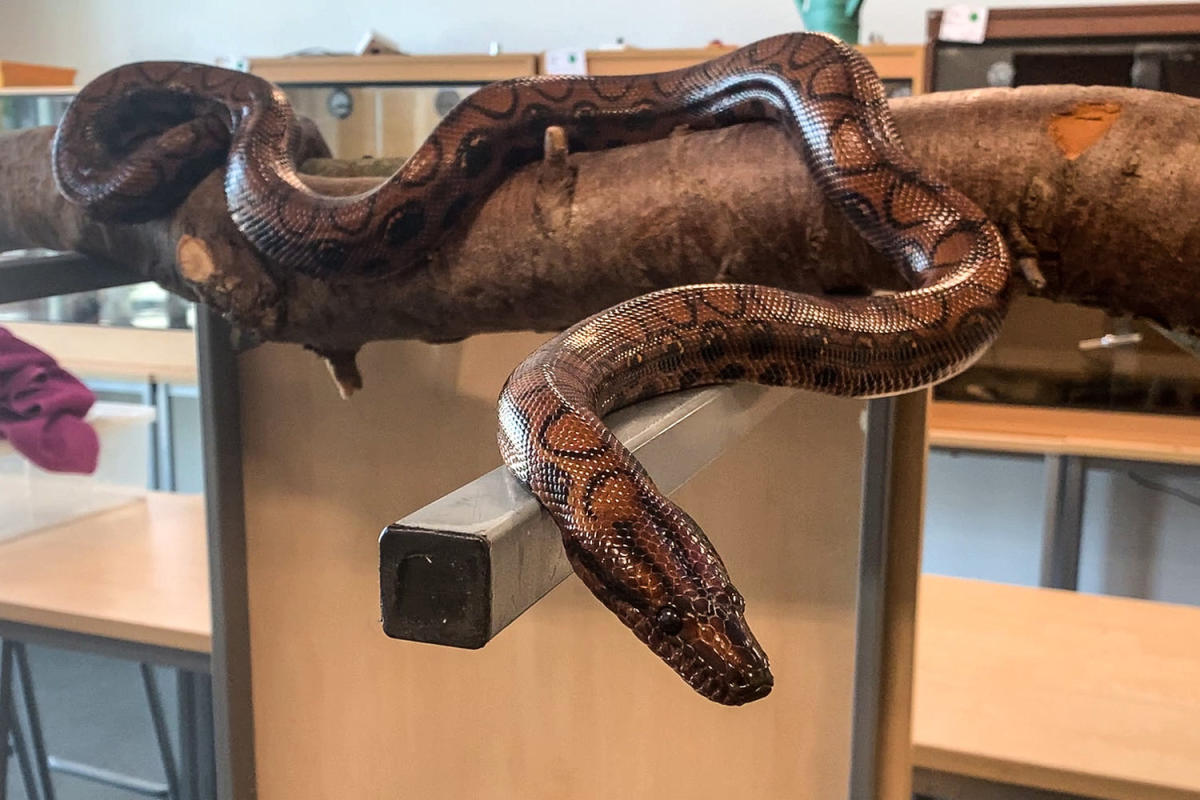Bugatti has a small collection of historic vehicles in his castle, next to his workshop in Molsheim, France. It takes them to customer events, car shows and – on occasion – to allow journalists like us to drive them. But if you really want to delve into the metaphorical crates of the company’s history, you’ll need to drive about an hour north of the headquarters to the Schlumpf Collection, also known as the Musée National de l’Automobile.
Housed in a former wool mill in the Alsatian river town of Mulhouse, the collection is stunning. It contains 80 Bugattis, the world’s largest amalgamation, tracing the history of the brand and its brilliant founding family, from before the founding of the eponymous company in 1909 to the present day.
In case you don’t think that’s enough reason to visit, the collection also includes over 300 other vehicles, charting the entire timeline of the automotive industry. The approach is, as you might imagine, European and encyclopedic, with a Gallic slant.
It contains the earliest French cars, including an 1878 Jacquot steam car, an 1884 (replica) Delamare-Debouteville Et Malandin that predated Benz’s Patent Wagen by a few years, and a Daimler-powered 1894 Peugeot Phaetonnet Type 8 It has all kinds of mass-produced vehicles from the first decades of the 20th century, then Phaeton, Double Phaeton, Vis-á-Vis (face-to-face), Dos-á-Dos (back-to-back), Tonneau and Torpedo bodywork and seating styles dominated the emerging French roads.
It also has dozens of Rolls-Royces, Hispano Suizas, Isotta Fraschinis from the classic era, along with large Mercedes-Benzes, Horsches and Maybachs with extremely problematic wartime provenance. There are also at least one Voison and one Delahaye, and some deep racing cars, including an original 1955 Mercedes 300SLR, a Ford RS200 and an F1 machine driven by Michael Schumacher and Nelson Piquet.
The museum collection follows the last decades of the 20th century with more modern eccentric examples such as a Tatra T87, a Trabant 601, an Alpine A110, an NSU Ro 80 with rotary drive, a Citroen SM, a Renault R5 Turbo and an Aston Martijn Lagonda.
But since we were in France for the unveiling of the new Bugatti Tourbillon, we decided to focus on that brand. There was plenty to hone in on, but these were some of our favorites in (mostly) chronological order. You can see design elements, from the horseshoe-shaped front end to the central spine, that have been carried over into today’s cars.
1904 Mathis Hermés Simplex Biplace Sport
In the early years of the 20th century, while Ettore Bugatti was still tinkering with his first prototypes of the same name at the Alsatian manufacturer De Dietrich, he met Émile Mathis, a car dealer in Strasbourg. They worked together to create their own brand, one of approximately 500 brands that existed in France at the time. This elegant runabout could reach a speed of 130 km/h via its 92 hp, 12-liter four-cylinder engine, at a time when most road cars could barely trot.
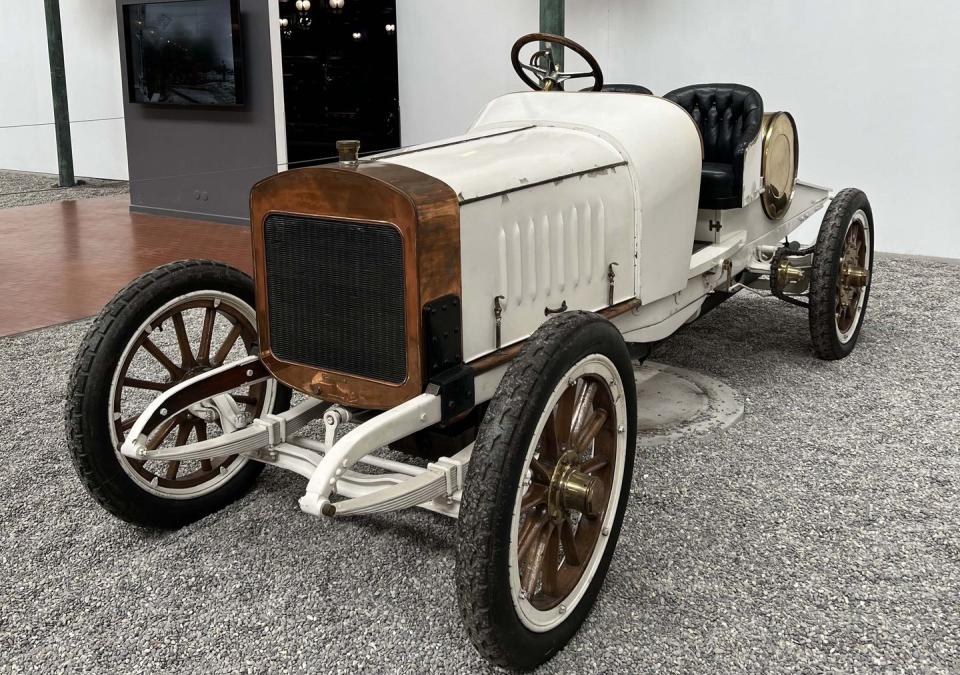

1913 Peugeot Torpedo type BB
Ettore founded his eponymous company in 1909, but even a few years later he still needed money to get his factory running, so he continued with engineering consulting projects. This included working with mainstream carmakers such as Peugeot, for whom he helped develop this 0.85-litre, 11bhp four-cylinder car, which manages a paltry 56km/h but still has the heart of a Bugatti in it has itself.
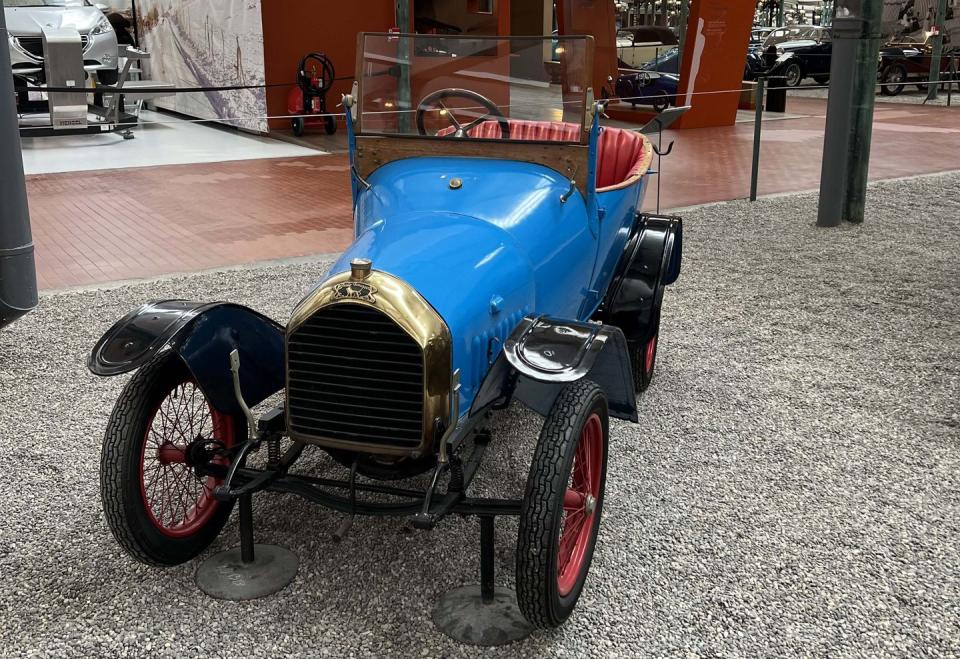

Bugatti Type 28 from 1921
This prototype, of which only two were made for the 1921 Paris Auto Show, marked the moment when Bugatti truly became Bugatti. This was Ettore’s first eight-cylinder in-line, an engine design that would become a company signature. It sported an early version of the now famous Bugatti horseshoe grille. It also introduced Bugatti’s inverted quarter-elliptic rear suspension, rear-mounted transaxle and steering wheel-mounted dials for adjusting the carburetor’s fuel-air mixture.


Bugatti Type 35B from 1927
The Type 35 helped create the automotive category of off-the-shelf racing cars – trackable vehicles that could be ordered directly from the factory. Not surprisingly, it was one of the winningest vehicles of its time, with more than 1,800 checkered flags. The “B” in the name indicated this model as the most powerful in the series, with 140 hp from a supercharged eight-cylinder and a speed of 210 km/h. This French Blue version features an amazingly smooth, streamlined modern bodywork from the famous French coachbuilder Soutchick, making it a race car for the street.


Bugatti Type 52 from 1928
If you were the young scion of a wealthy European family in the Jazz Age, and longed to follow your parents’ racing roots, you couldn’t just fire up Forza or a track simulator. But you could buy one, a battery-powered, 1:2 scale version of the Type 35 known as the Baby Bugatti, and enjoy it on your estate or compare it with other children. The Little Car Company currently makes a licensed reproduction, which is also traceable.


1936/1956 Type 57
In the mid-1930s, Bugatti made only one model, the Type 57. This car started life as an original convertible version. But in the 1950s it was revised by Soutchick and given this new, modern body. Does that make it a restomod?
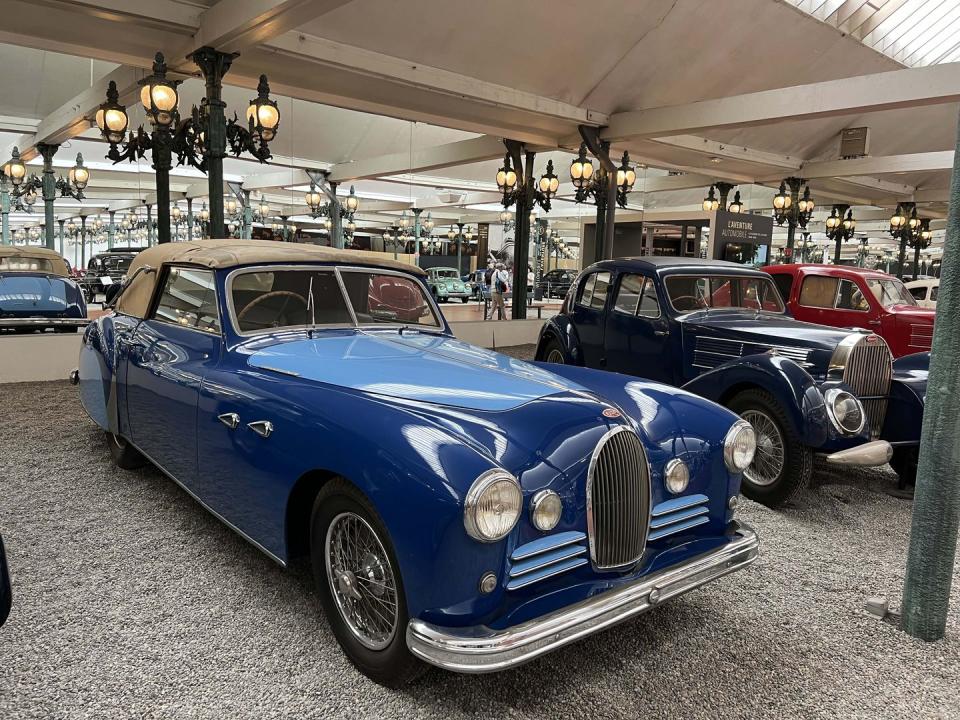

Type 101 from 1952
By the early 1950s, the Bugatti car manufacturer was virtually extinct. But Ettore’s youngest son, Roland, had the not-so-brilliant idea to try to revive the brand by reshaping a leftover, archaic 1940 Type 57 chassis and revamping their inline-eight engines. revised with a new Weber carb and a four-speed gearbox. . It was, unsurprisingly, a flop. Only seven were ever made. The museum has three: a red convertible, a white four-door and a blue coupe, all built by Swiss coachbuilder Gangloff.
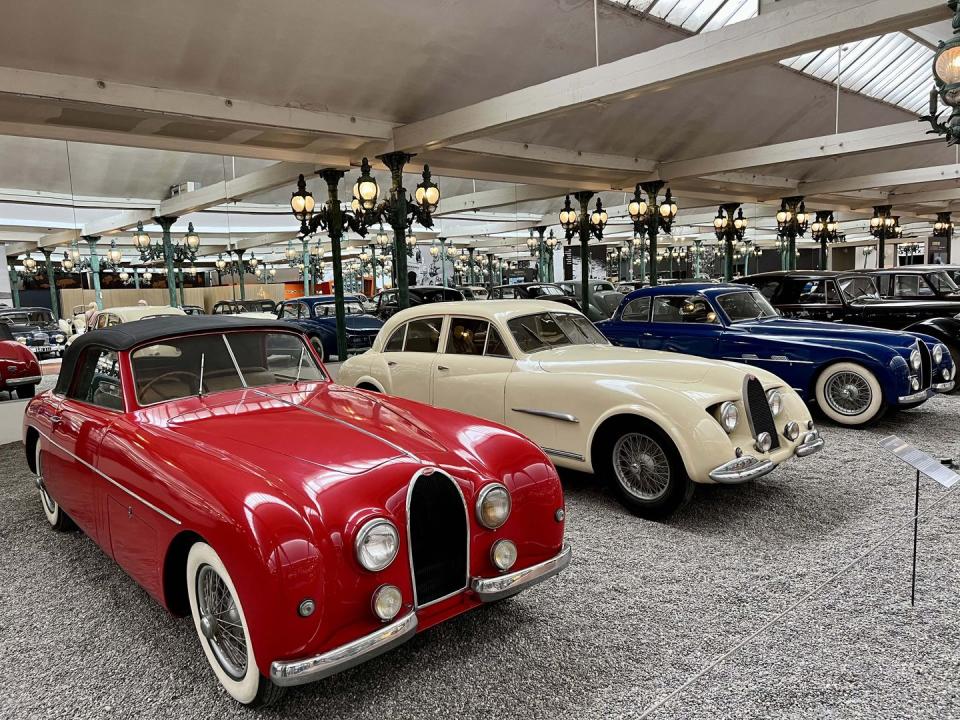

Bugatti type 251 from 1955
Roland Bugatti remained relentless in his quest to revive the brand. But this single-seat Grand Prix car was his last attempt. The car, designed by Gioacchino Colombo, known for the Ferrari V-12, had an extra square 2.5-liter inline eight-cylinder mounted transversely amidships. Although the car produced 230 horsepower and reached a speed of 160 mph, it was a failure at the 1956 French Grand Prix, completing only twelve and a half laps. The Bugatti brand then disappeared for thirty years, until the EB110 from 1987.
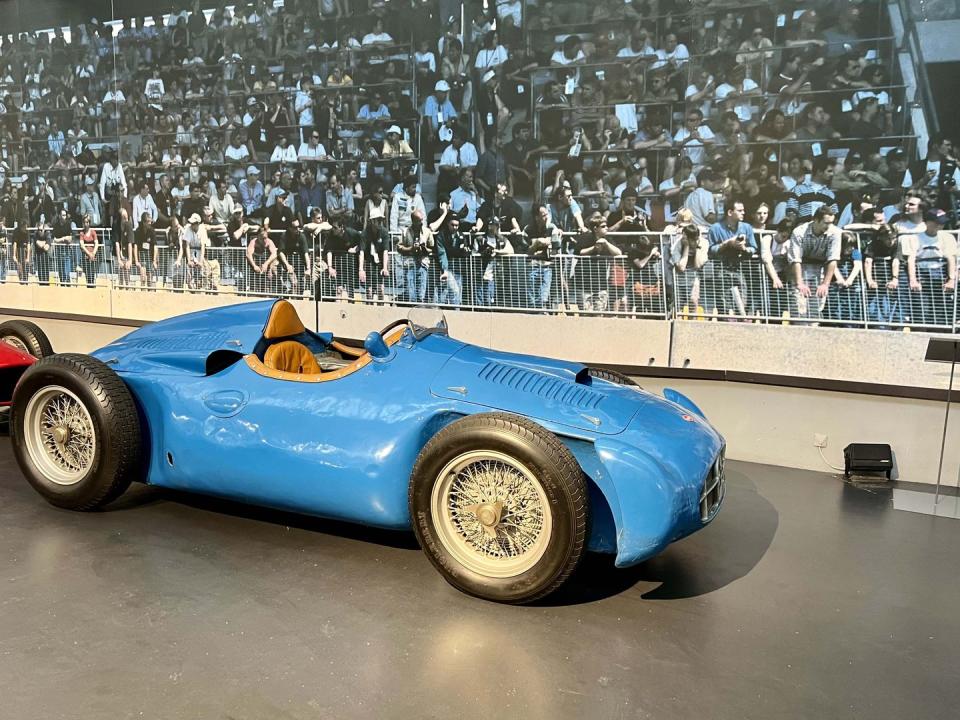

1927/1933 Bugatti Type 41
In the mid-1920s, Ettore faced competition from brands such as Isotta Fraschini and Rolls-Royce and set out to build the best and most exclusive car in the world, hoping to sell a few dozen to the global 1 percent. Unfortunately, the Great Depression intervened. Only seven were made, only three were ever purchased, and only six are still in existence. The museum has two: a Coupe Napoleon that was always owned by the Bugatti family and a Park-Ward-bodied limousine that was sold to the heir to a Boston department store fortune. These cars are impressive, measuring 20 feet long, weighing 7,000 pounds and rolling on 24-inch alloy disc wheels. They are powered by a 12.8-liter eight-cylinder in-line engine with 300 hp, good for a torque of 875 Nm. Standing between two of them was like being the meat in a car collector’s fantasy sandwich.
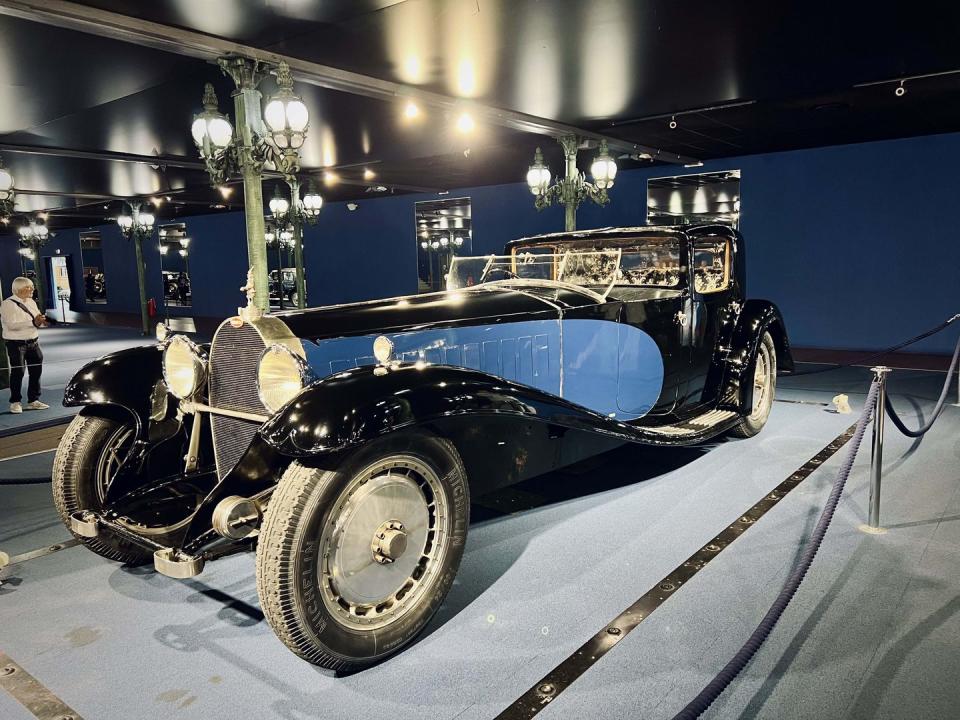

You might also like it




